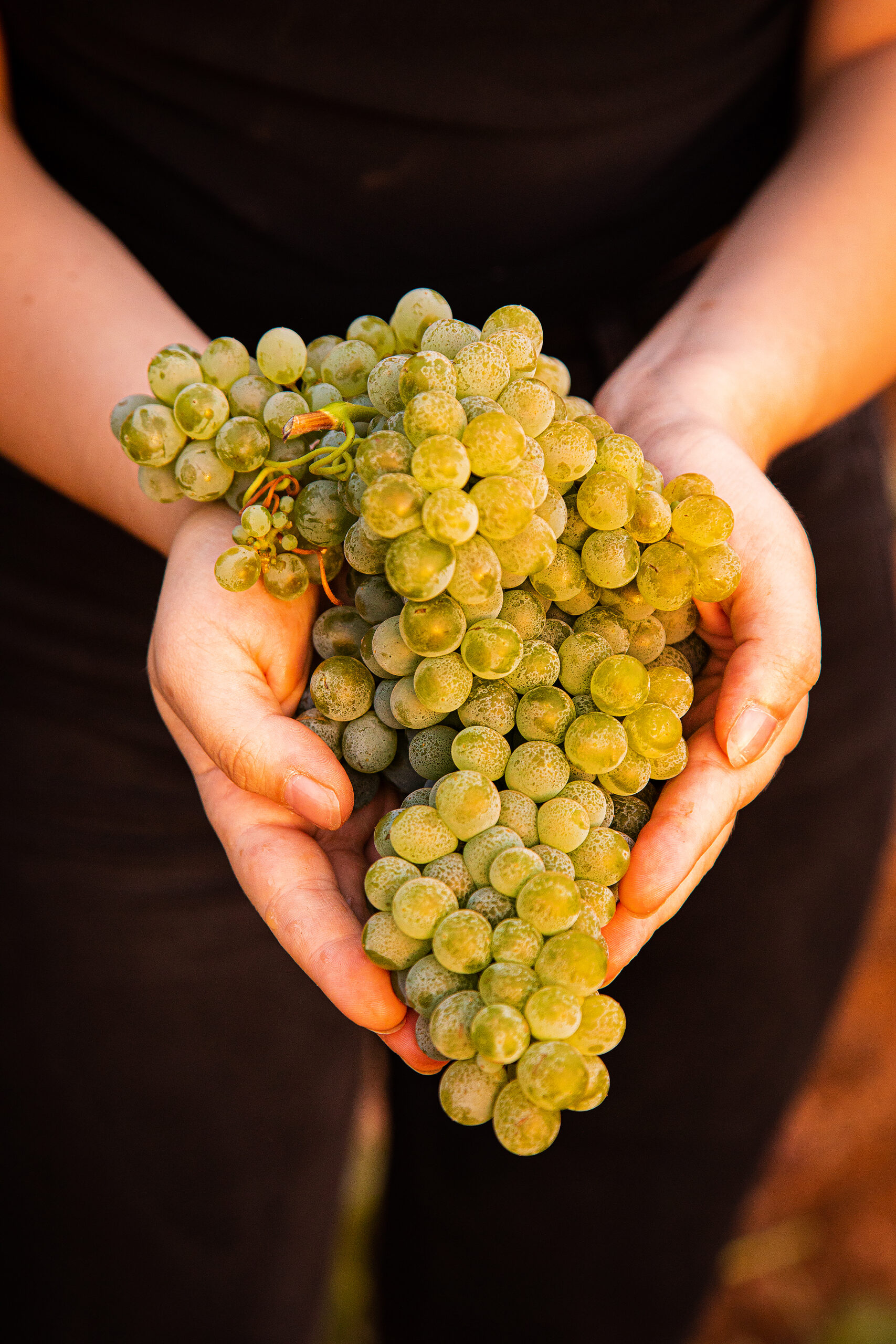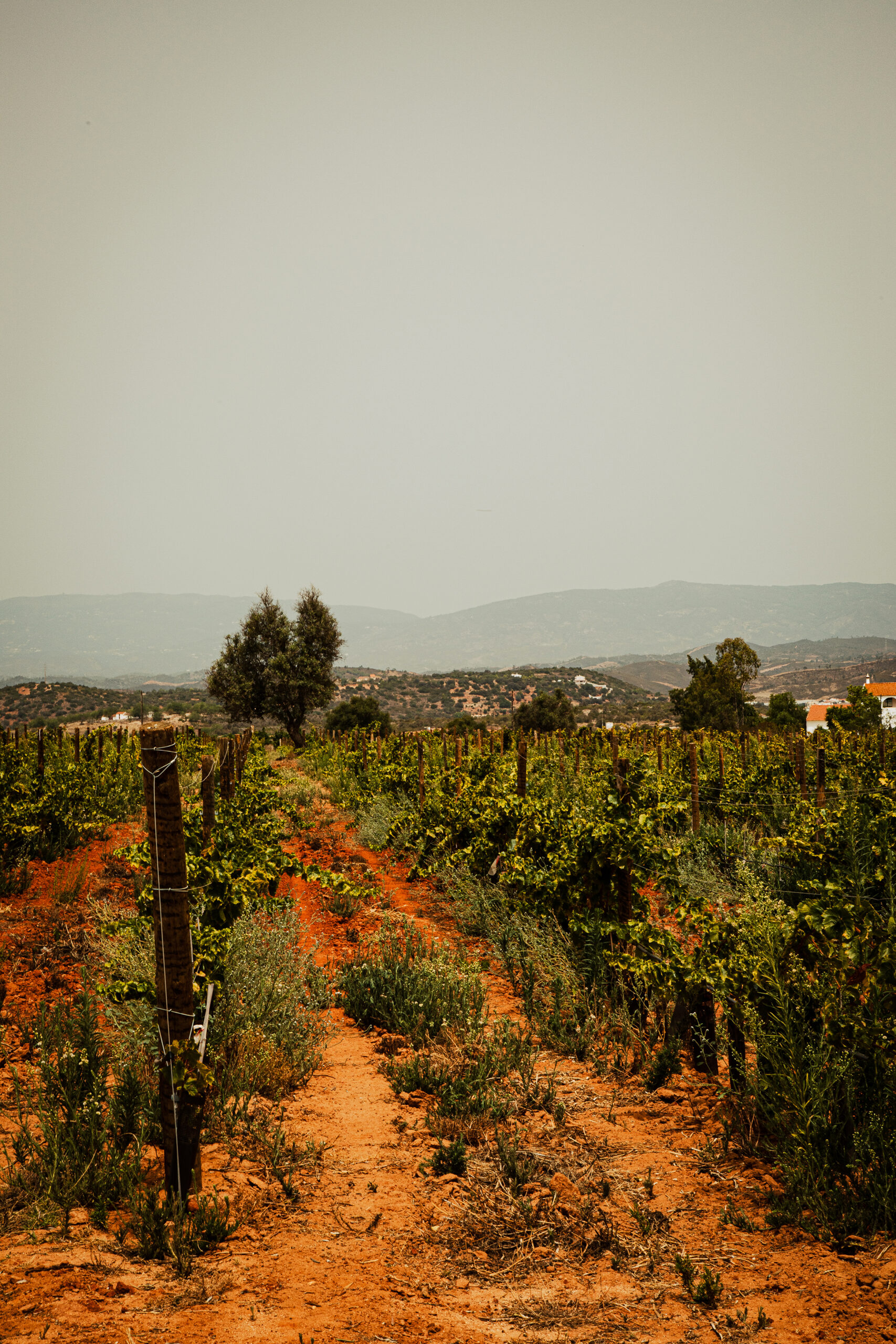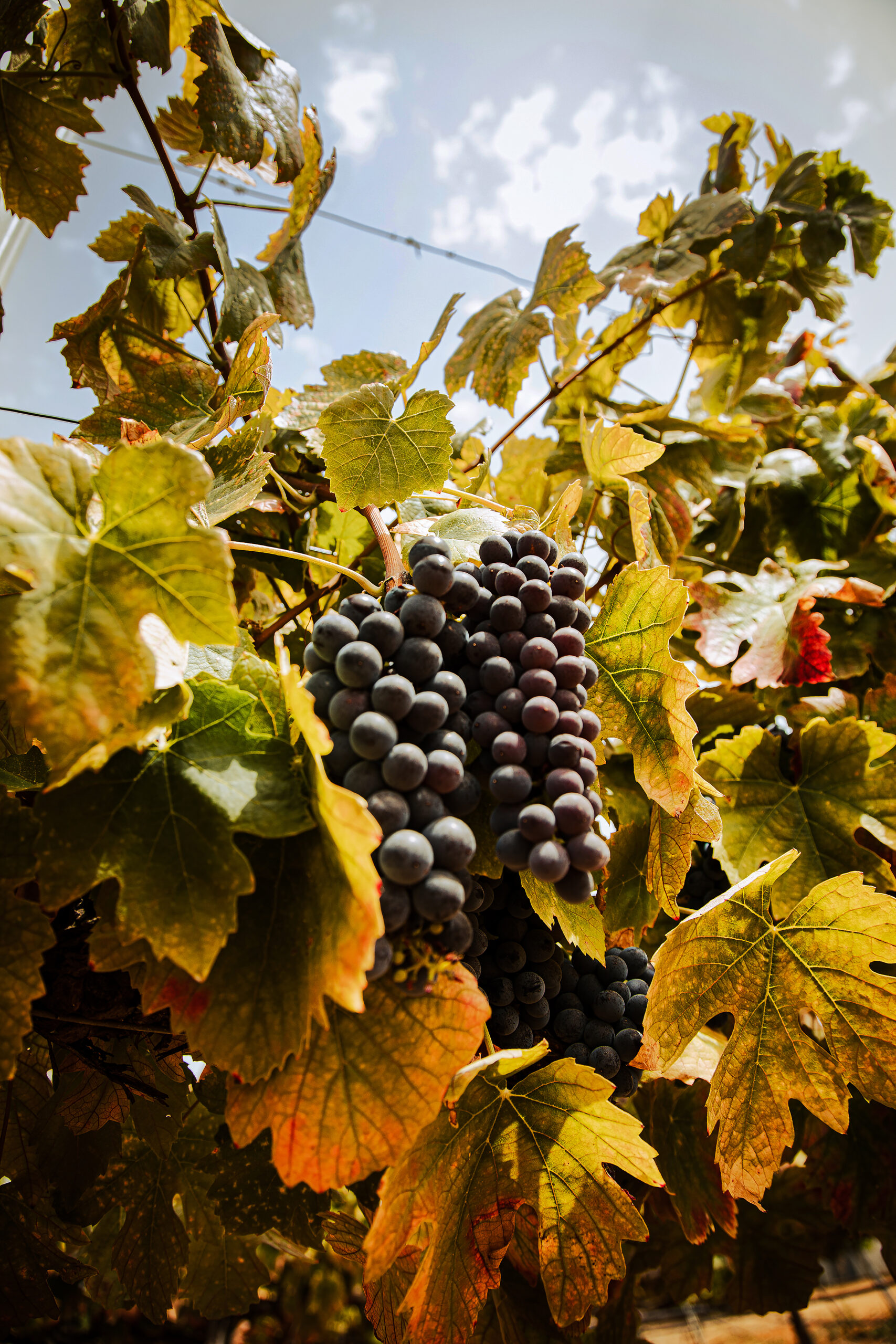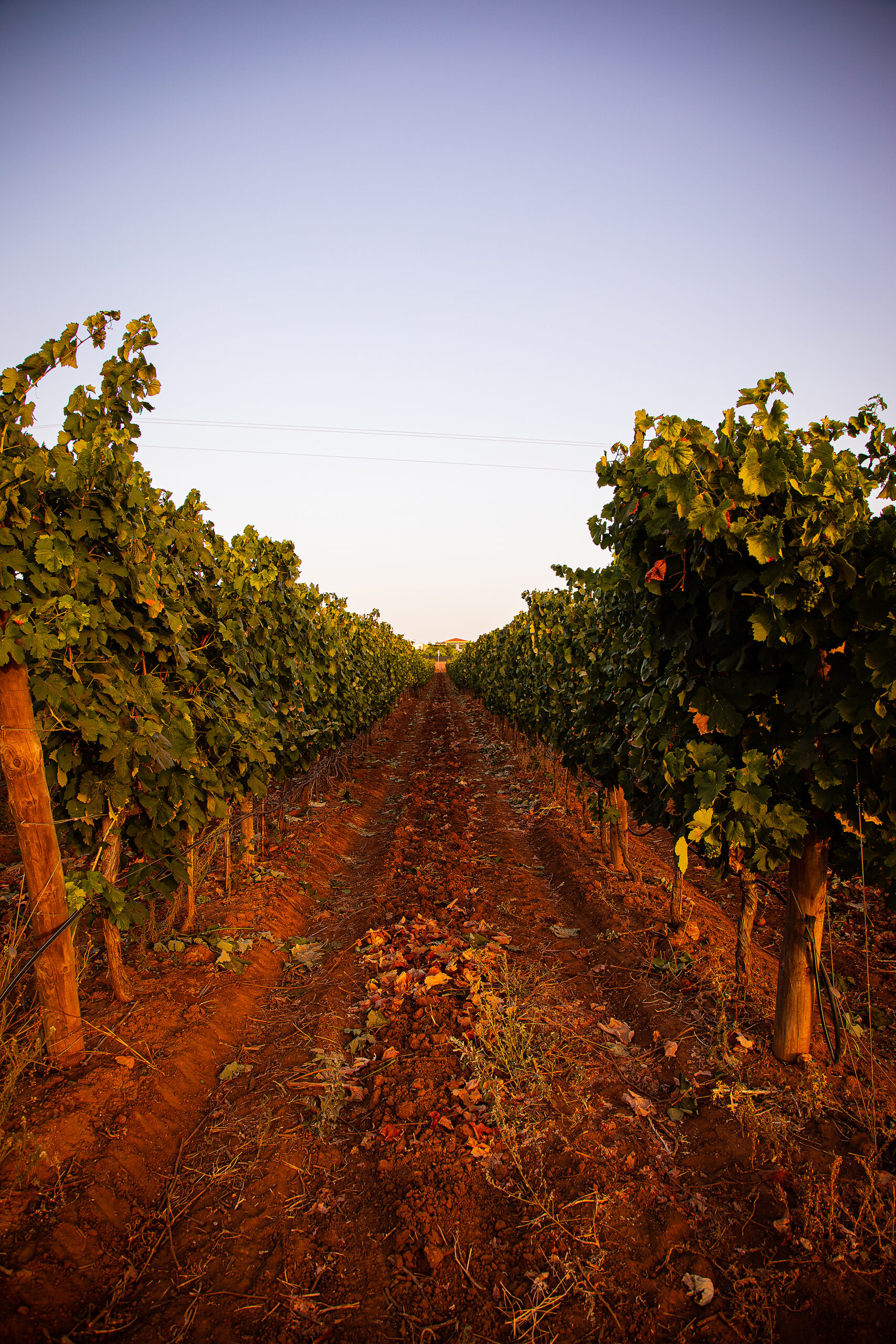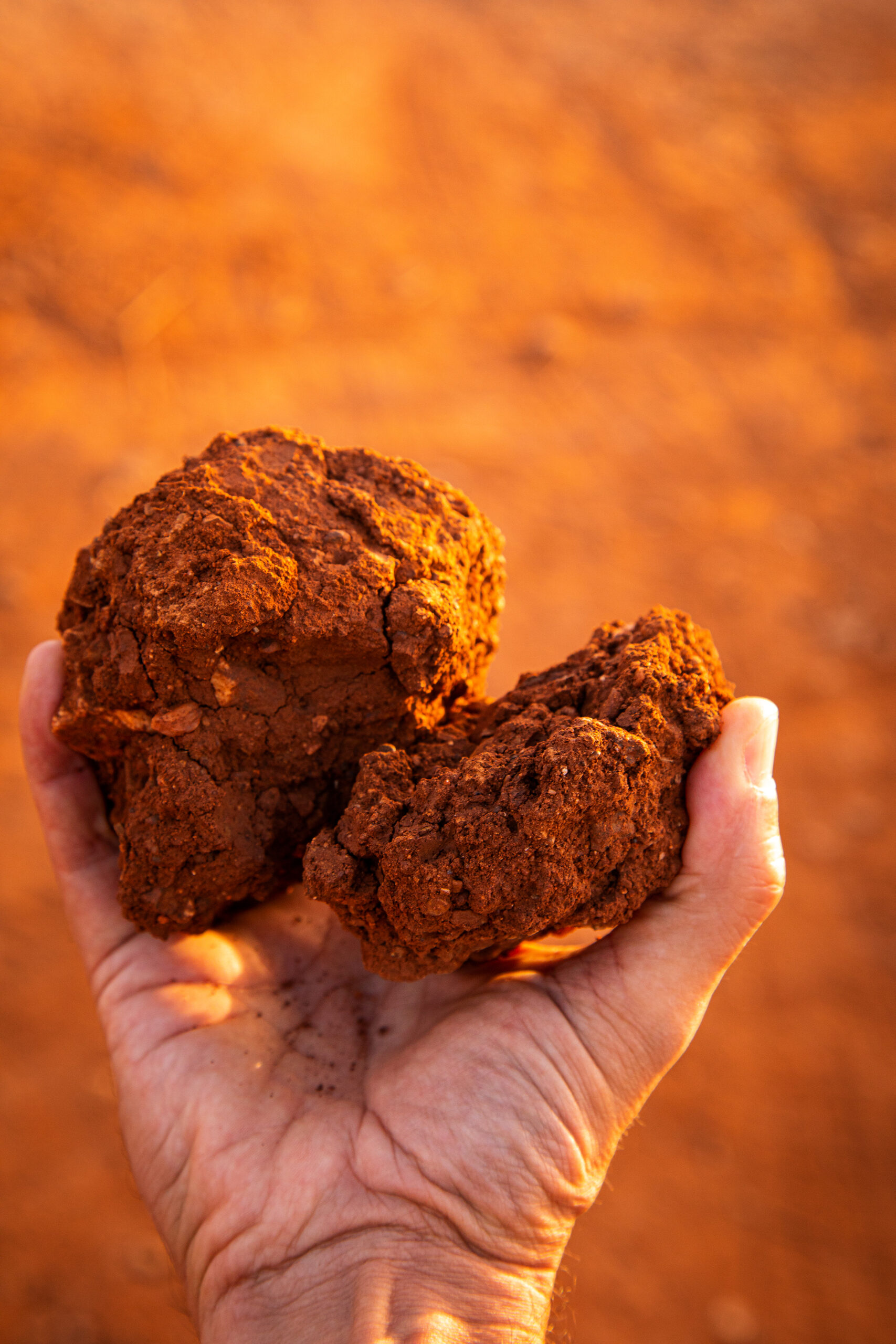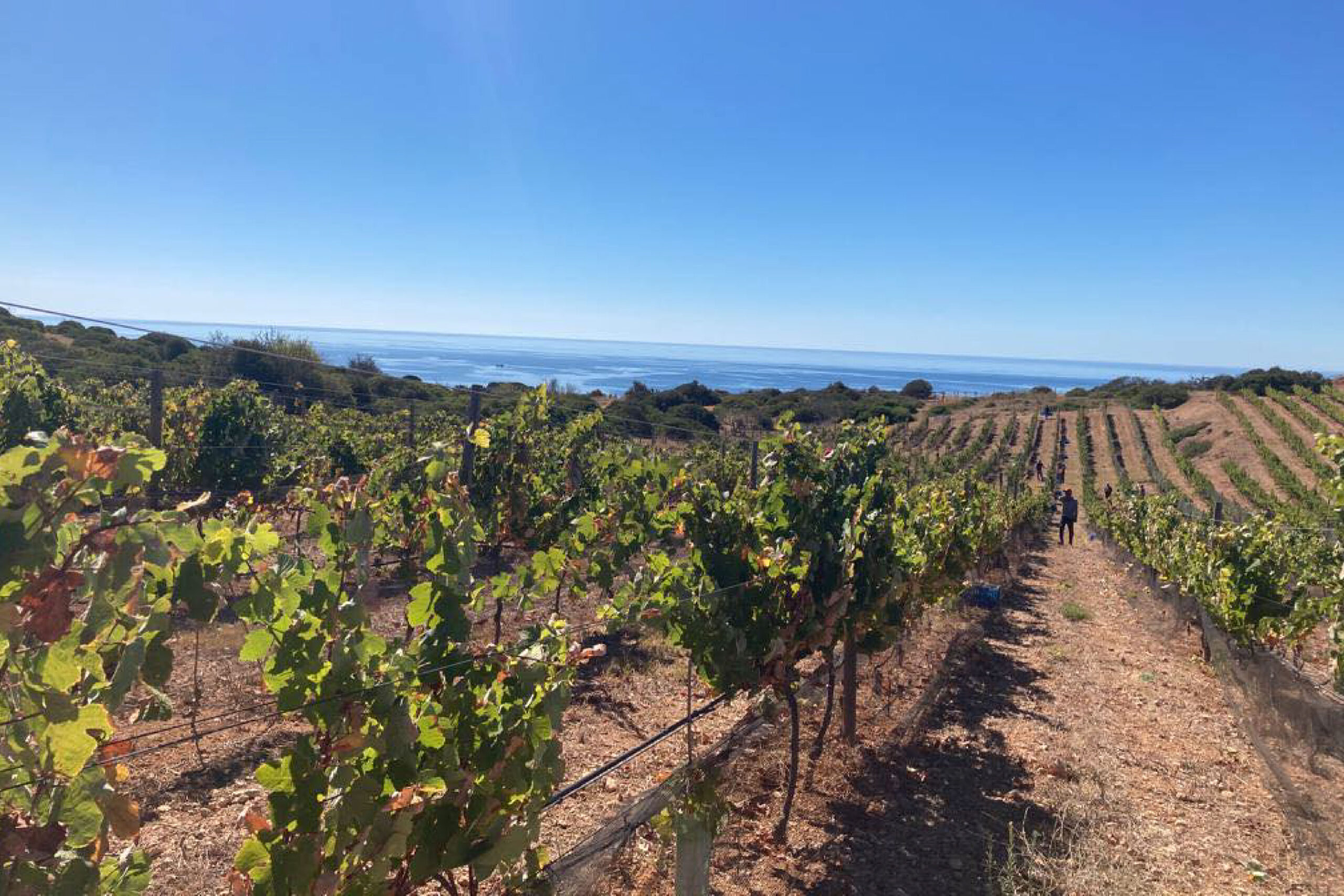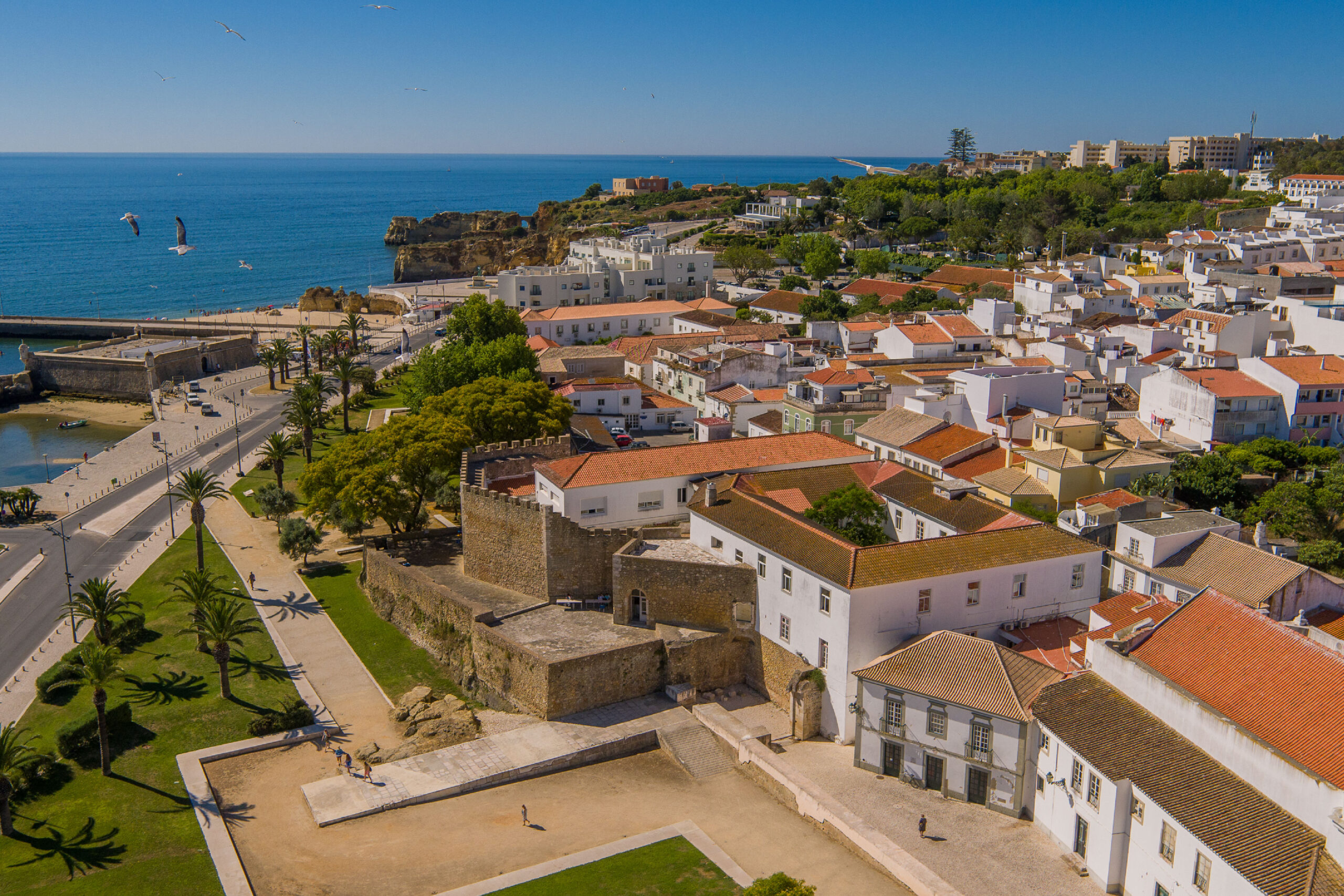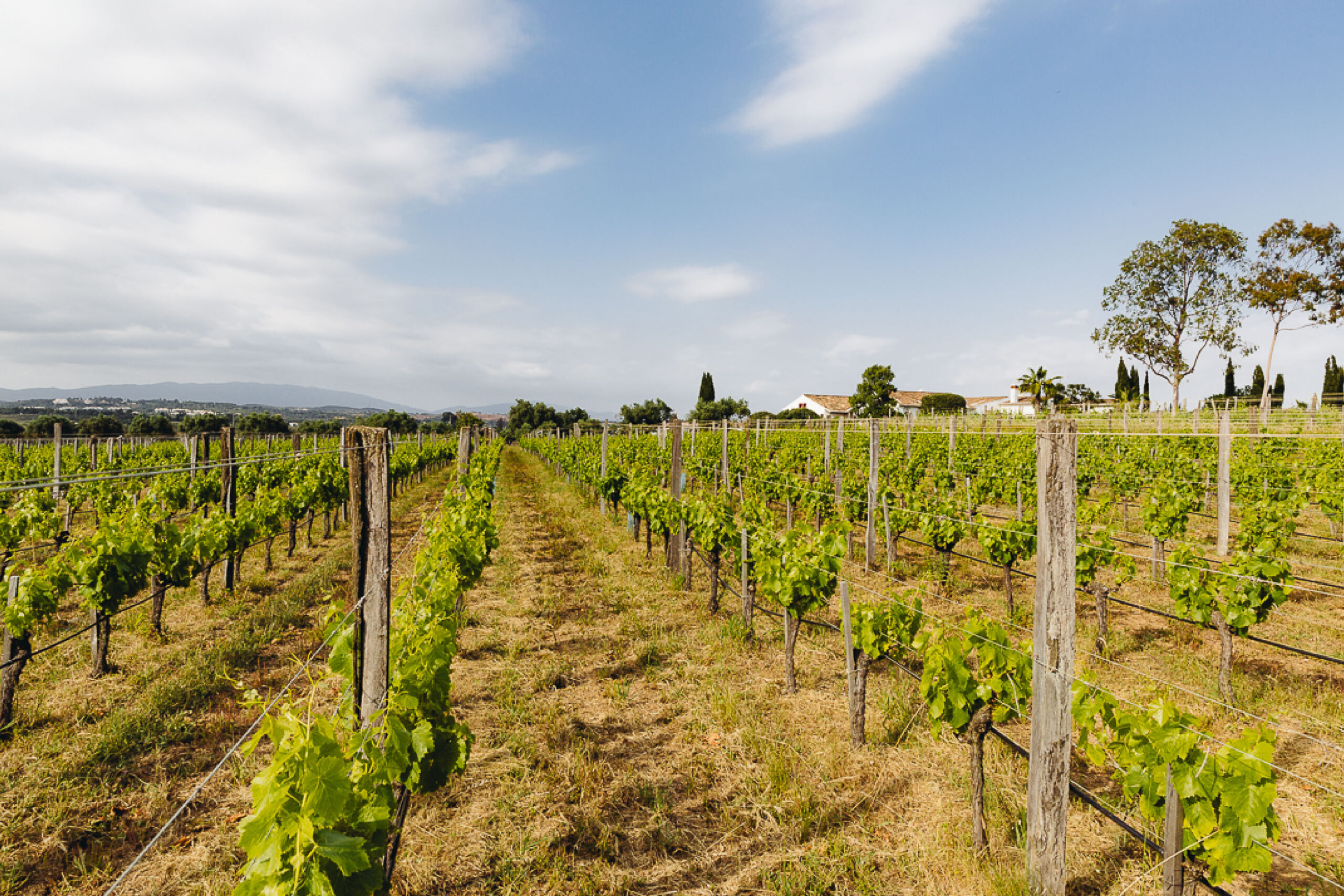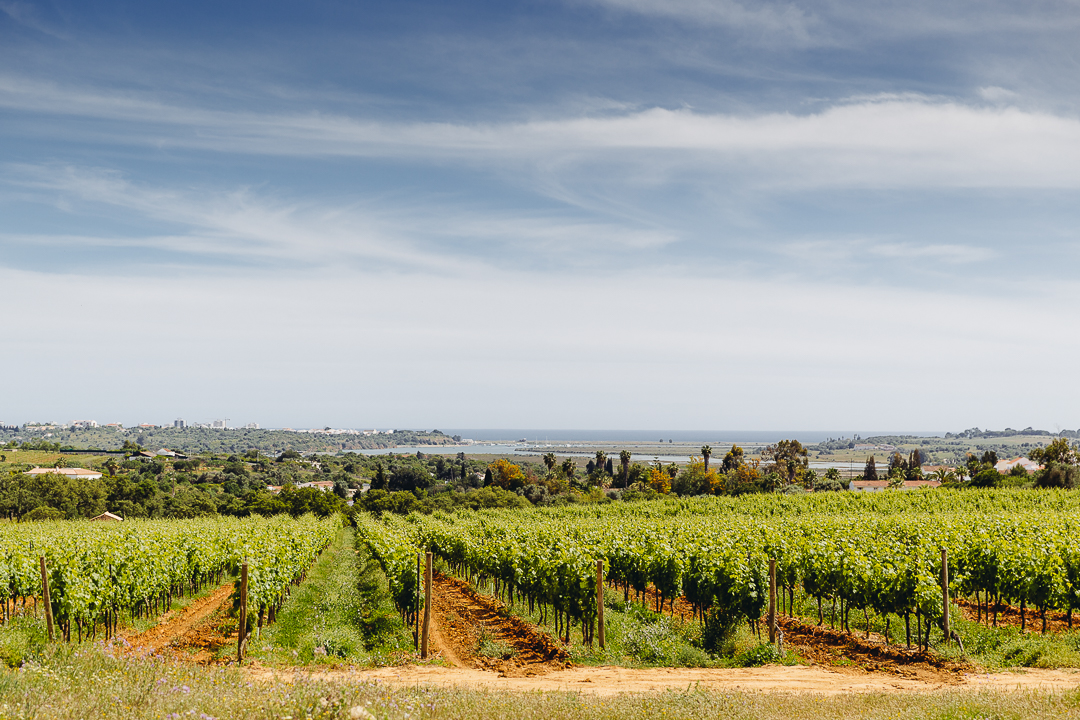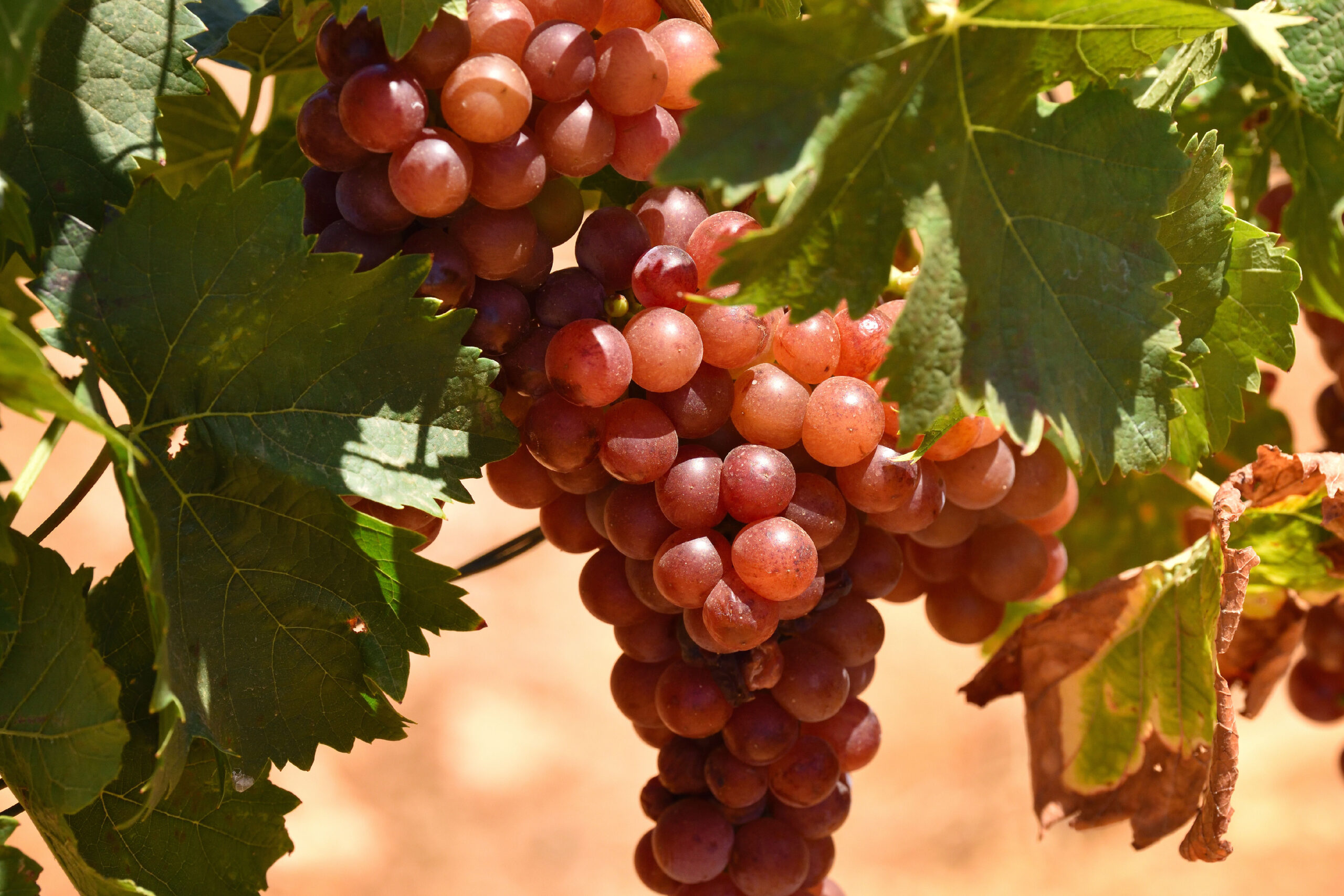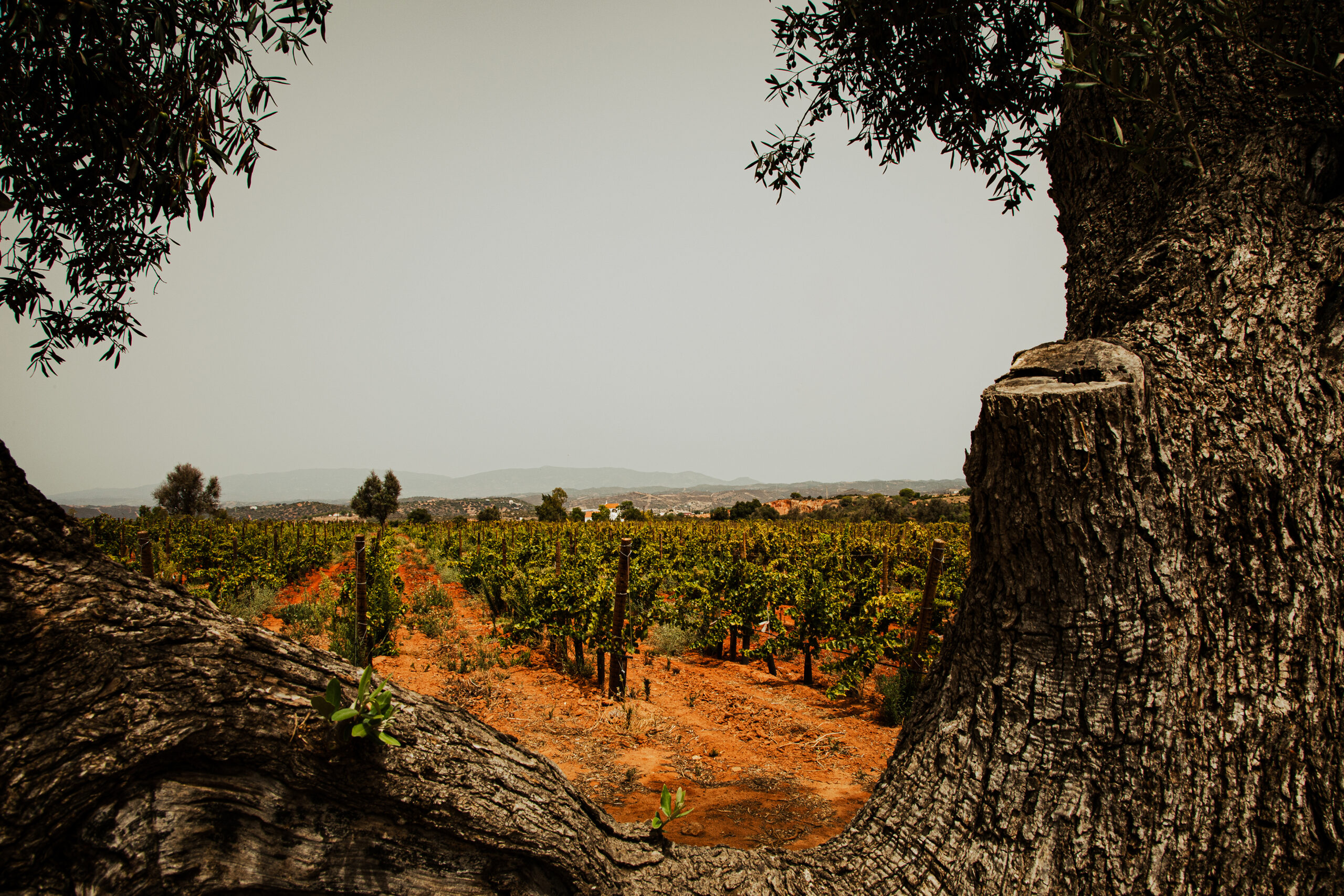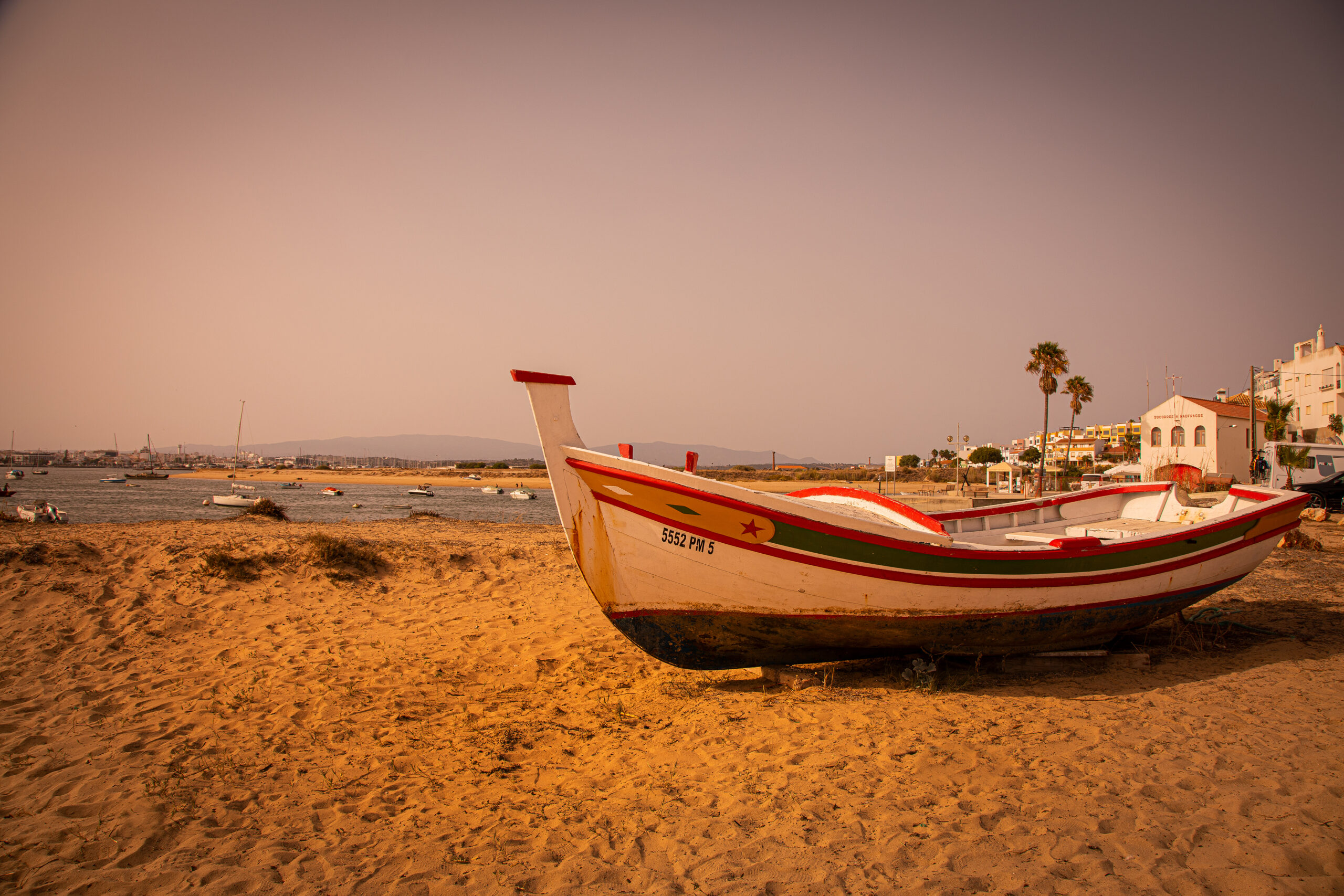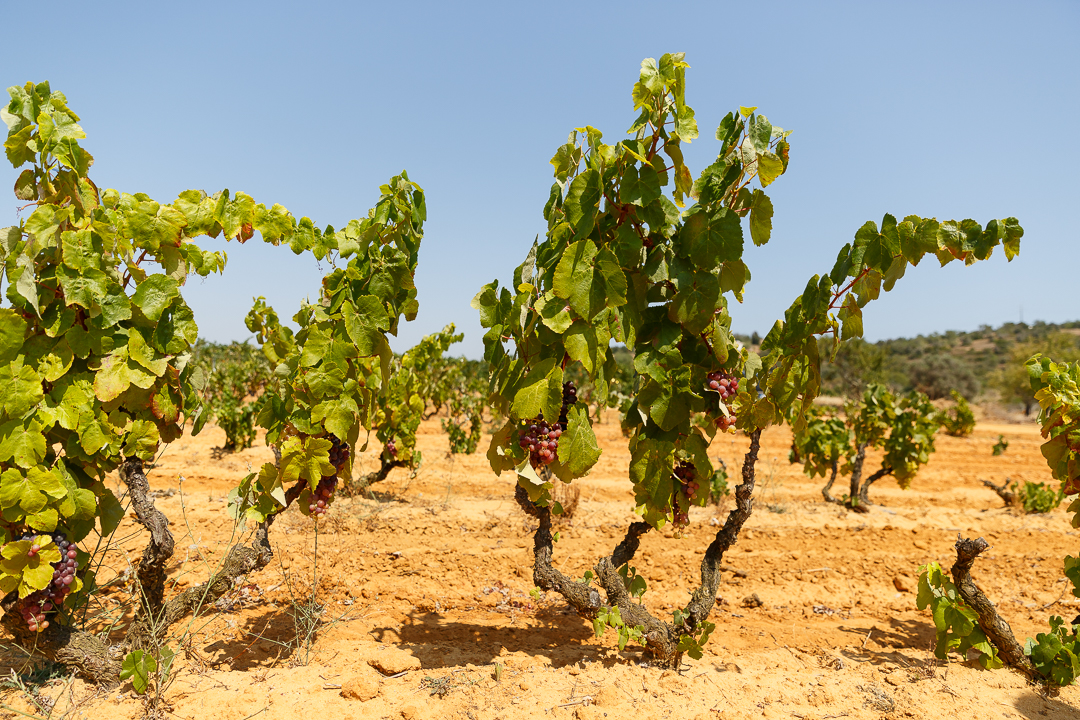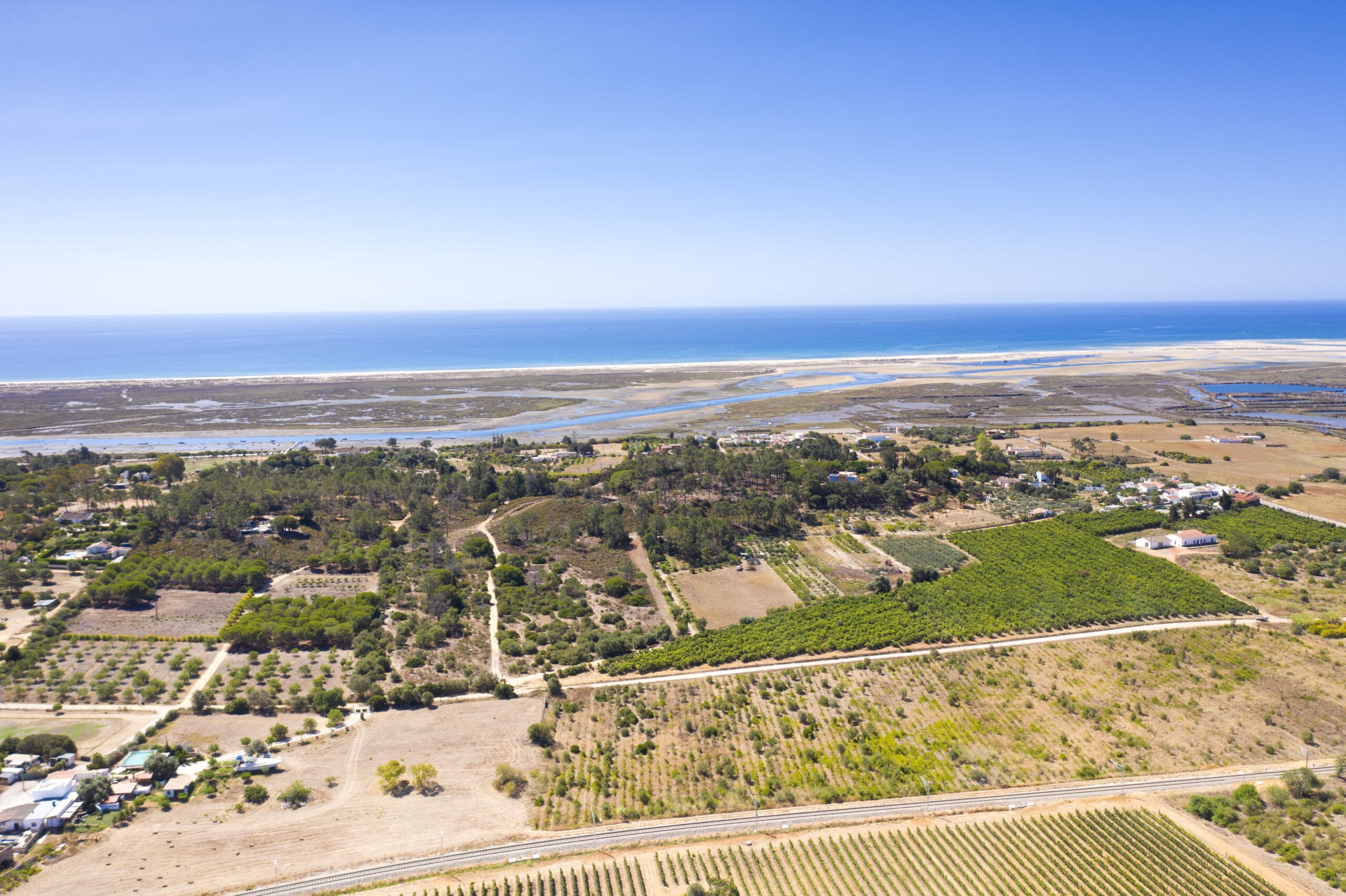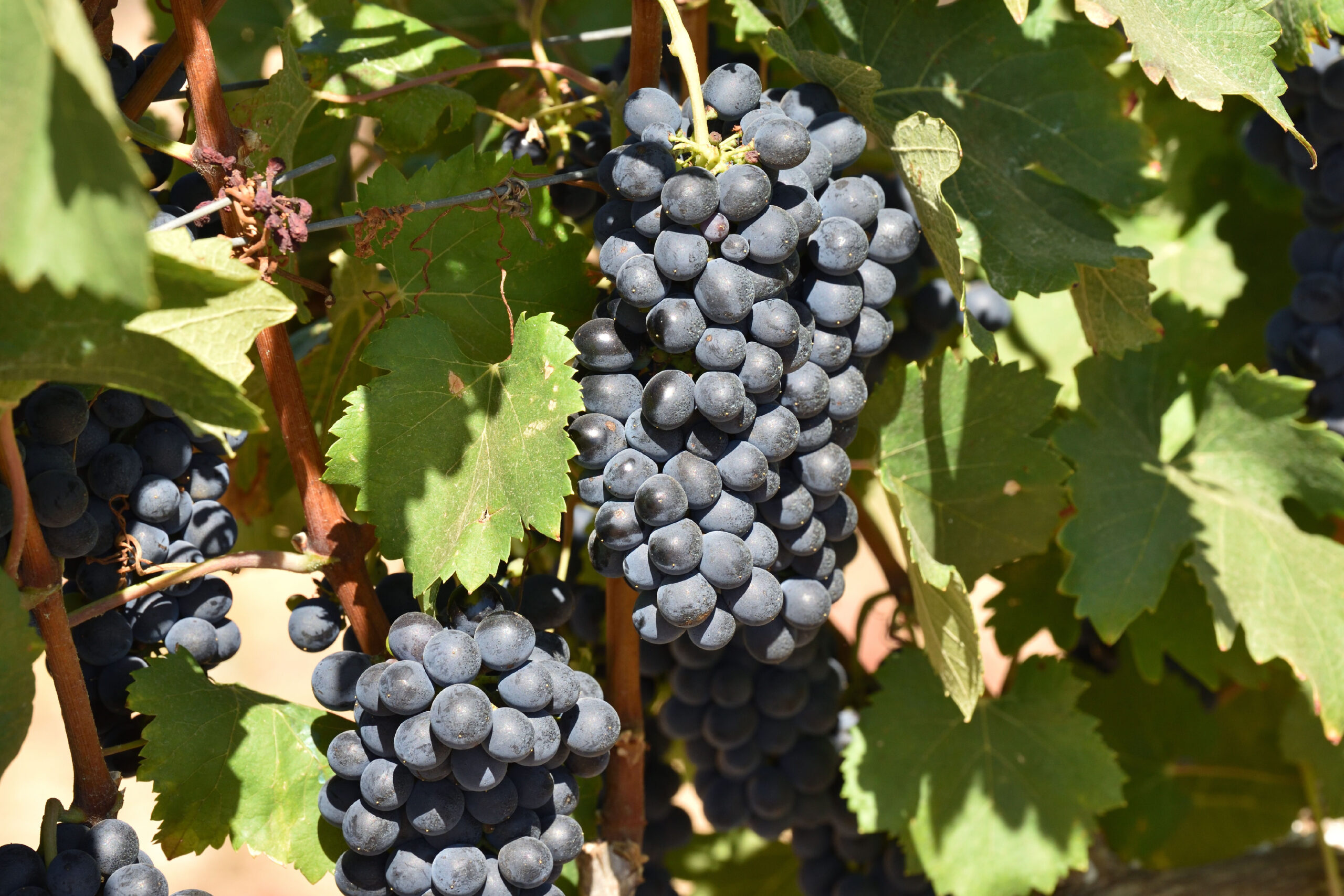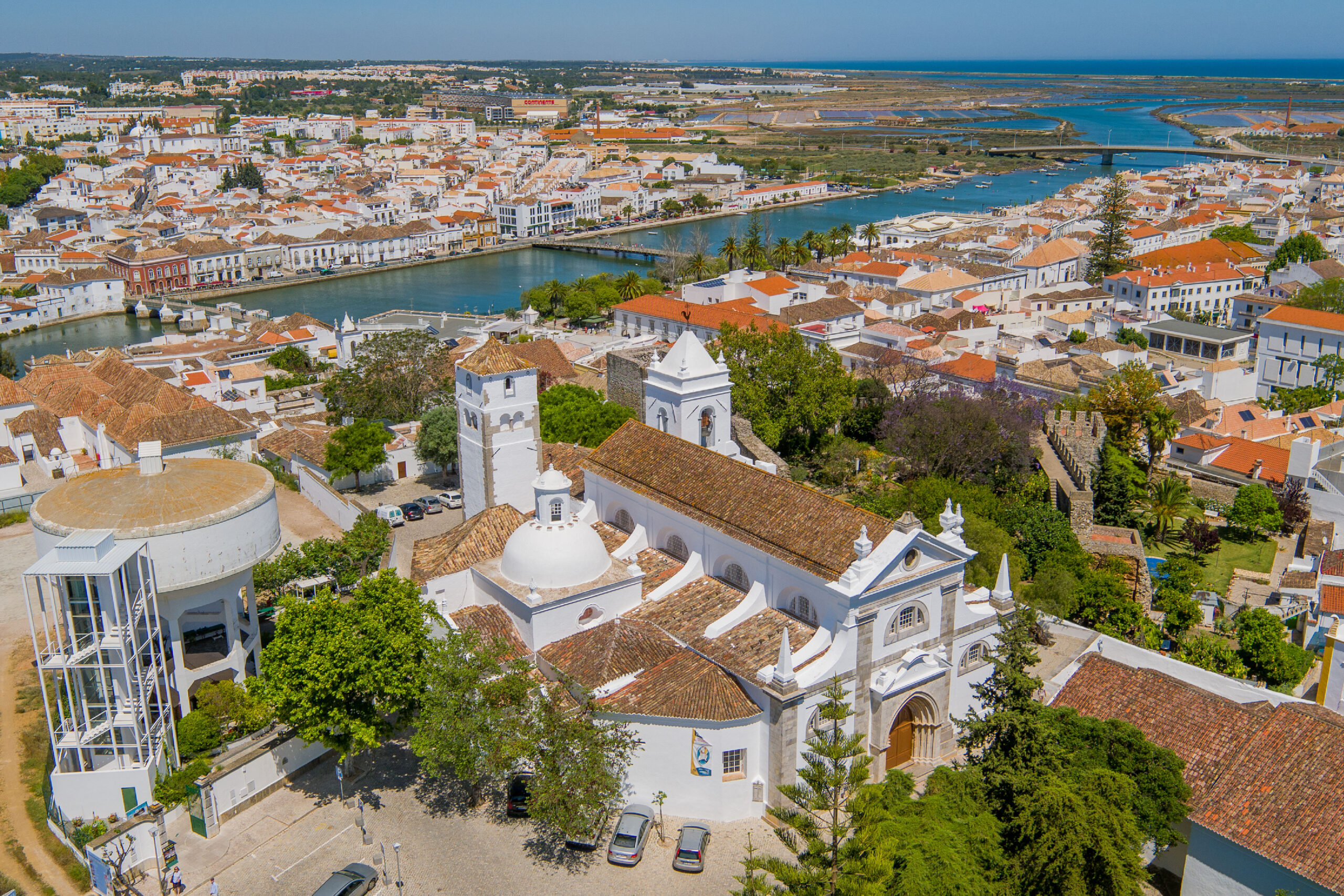ALGARVE REGION
A World to Discover
Located in the south of Portugal, the Algarve Region covers a total area of 4,960 km2.
Bounded to the north by the Alentejo, to the east by the Guadiana River, and to the south and west by the Atlantic Ocean, it boasts a coastline of 320 km.
The climate, Mediterranean with Atlantic influence, is known for being hot, dry, with little wind, and with reduced temperature variations, with over 3,000 hours of sunshine per year and a low level of annual precipitation.
– The Algarve Terroir is made of three distinct geographical zones –
- The Coast
- dominated by steep cliffs and extensive sandy beaches, with sandy and clayey-sandy soils;
- The Coast
- The “Barrocal”
- the zone between the coast and the mountains, consisting of clayey-sandy, clayey-limestone, schistose and alluvial soils;
- The “Barrocal”
- The Mountains
- which occupy 50% of the territory, are formed by schistose and some granitic rocks.
- The Mountains
– These factors combined with a millennia-old tradition –
in wine production and consumption, as well as cultural peculiarities specific to the region, reflected in viticultural traditions and existing vinification methods, we obtain the diversity that influences the wines of the Algarve. And it is from this combination of relief, topography, climate, soils, cultural traditions, and human intervention that the unique character of its wines is born.
Algarve Wines – A World to Discover.
ALGARVE
Wine Region
The Algarve Wine Region currently has approximately 1,427 hectares of vineyards, making it the second smallest wine region in Portugal.
Despite the uniform character that marks the region, the existing diferences along the coast, in the “barrocal” and in the Algarve mountains, lead to the division into 4 regions with Designation of Origin: Lagos, Portimão, Lagoa, and Tavira.
Additionally wine with Geographical Indication Algarve is produced throughout the region.

The Regions
DO
lagoS
Established in 1990 and located in the western Algarve, this Registered Designation of Origin (D.O.C.) is composed by the municipalities of Aljezur (part of the civil parishes of the same name, Bordeira, and Odeceixe), Vila do Bispo (the civil parishes of Raposeira, Sagres, and Vila do Bispo, and part of the parishes of Barão de São Miguel and Budens), and Lagos (civil parishes of Luz, Santa Maria e São Sebastião, and part of the civil parishes of Barão de São João, Bensafrim, and Odiáxere).
Influenced by the Serra de Monchique to the north, which provides protection against cold winds and exposure facing south, its climate is distinctly Mediterranean, hot, dry with little thermal amplitude.
The vineyards are established in dry soils consisting mostly of sandstones and red or yellow Mediterranean soils.
Recommended Grape Varieties
Red Grape Varieties
- Indigenous Varieties: Negra Mole*
- Traditional Varieties: Trincadeira* and Castelão*
- National Varieties: Bastardo, Monvedro, and Touriga Nacional
- International Varieties: Alicante Bouschet, Aragonez, Cabernet Sauvignon
White Grape Varieties
- Traditional Varieties: Arinto* and Síria* (Crato Branco)
- National Varieties: Malvasia Fina*, Manteúdo, Moscatel Graúdo, and Perrum.
*with a minimum of 70% of the grape varieties, either collectively or individually.
DO
Portimão
This Registered Designation of Origin (D.O.C.) was established in 1993. Located in the western Algarve, it encompasses the municipality of Portimão (civil parish of Alvor and part of the parishes of Mexilhoeira Grande and Portimão).
Its climate is influenced by the proximity of the Atlantic Ocean, becoming distinctly Mediterranean. The soils are predominantly sandy, sandy-clayey, red or yellow Mediterranean soils.
The vineyards are situated in the region of the Algarve “barrocal,” experiencing influences from both the Atlantic Ocean and the Alvor river estuary.
Recommended Grape Varieties
Red Grape Varieties
- Indigenous Varieties: Negra Mole*
- Traditional Varieties: Trincadeira* and Castelão*
- National Varieties: Monvedro and Touriga Nacional
- International Varieties: Alicante Bouschet, Aragonez, Cabernet Sauvignon and Syrah
White Grape Varieties
- Traditional Varieties: Arinto* and Síria* (Crato Branco)
- National Varieties: Manteúdo, Moscatel Graúdo, Perrum e Rabo-de-Ovelha.
*with a minimum of 70% of the grape varieties, either collectively or individually.
DO
Lagoa
Established in 1983, this Registered Designation of Origin is located in the western Algarve. It is the oldest in the demarcated region. Composed by the municipalities of Albufeira, Lagoa, Loulé (civil parishes of Almancil, Boliqueime, Quarteira, São Clemente, and São Sebastião, and part of the civil parishes of Alte, Querença, and Salir), and Silves (civil parishes of Alcantarilha, Armação de Pêra, and part of the parishes of São Bartolomeu de Messines and Silves).
Due to the protection provided by the Serra de Monchique, an less subjected to maritime influence is created, where north winds prevail. The soils are mostly yellow sandstone or red Mediterranean.
The vineyards in this region benefit from a warm, dry, and less windy climate, with very limited thermal amplitudes and over 3000 hours of sunshine per year.
Recommended Grape Varieties
Red Grape Varieties
- Indigenous Varieties: Negra Mole*
- Traditional Varieties: Trincadeira* and Castelão
- National Varieties: Monvedro, Moreto, Touriga Franca e Touriga Nacional
- International Varieties: Alicante Bouschet, Aragonez, Cabernet Sauvignon e Syrah
White Grape Varieties
- Traditional Varieties: Arinto* and Síria* (Crato Branco)
- National Varieties: Manteúdo, Moscatel Graúdo, Perrum e Rabo-de-Ovelha
- International Varieties: Sauvignon Blanc
*with a minimum of 70% of the grape varieties, either collectively or individually.
DO
Tavira
This is the most recent Registered Designation of Origin in the region, established in 2001. Located in the eastern Algarve, it encompasses the municipalities of Faro, Olhão, São Brás de Alportel (part of the civil parish of the same name), Castro Marim (part of the civil parish of the same name), Tavira (civil parishes of Luz and Santiago, and part of the parishes of Conceição, Santa Catarina, Santa Marta, and Santo Estêvão), and Vila Real de Santo António (the civil parish of Vila Nova da Cacela).
With little pronounced elevations, the region is sheltered from winds, which contributes to a less rainy and less windy climate, with a lower thermal amplitude.
The vineyards are planted in predominantly sandy soils, at relatively low altitudes, with little pronounced relief.
Recommended Grape Varieties
Red Grape Varieties
- Indigenous Varieties: Negra Mole*
- Traditional Varieties: Castelão* and Trincadeira*
- National Varieties: Touriga Nacional
- International Varieties: Alicante Bouschet, Aragonez, Cabernet Sauvignon e Syrah
White Grape Varieties
- Traditional Varieties: Síria*(Crato Branco), Arinto* e Moscatel-Graúdo
- National Varieties: Diagalves, Manteúdo e Tamarez.
*with a minimum of 70% of the grape varieties, either collectively or individually.
IG
Algarve
In addition to the Registered Designations of Origin, there is also the Geographical Indication Algarve (IG Algarve), which covers the entire Algarve region. Geographically, the area is delimited to the south and west by the Atlantic Ocean and to the north by an extensive mountain system consisting of three mountain ranges:
- Serra do Caldeirão,
- Serra de Monchique
- Serra do Espinhaço do Cão
It is a region marked by Atlantic influence and the presence of the northern mountain ranges. The Algarve region receives more than 3000 hours of sunshine per year, particularly in the months leading up to the harvest, which contributes to grape maturation. Average annual precipitation values are relatively low.
The terrain and location give its climate a distinctly Mediterranean character: hot, dry, and with little wind.
Recommended Grape Varieties
Red Grape Varieties
- Indigenous Varieties: Negra Mole
- Traditional Varieties: Castelão and Trincadeira
- National Varieties: Alfrocheiro, Baga, Bastardo, Corropio, Manteúdo-Preto, Monvedro, Moreto, Moscatel-Galego-Tinto, Negra-Mole, Pexem, Tinta-Barroca, Tinta-Caiada, Tinta Carvalha, Tinta-Miúda, Tinto-Cão, Touriga-Franca, Touriga-Nacional e Vinhão
- International Varieties: Alicante Bouschet, Aragonez, Cabernet-Sauvignon, Caladoc, Carignan, Chambourcin, Cinsaut, Grand– Noir, Grenache, Merlot, Petit-Verdot, Pinot-Noir, Syrah (Shiraz), Tannat e Syrah
White Grape Varieties
- Traditional Varieties: Síria (Crato Branco), Arinto e Moscatel-Graúdo
- National Varieties: Alicante-Branco, Alvarinho, Antão-Vaz, Bical, Códega do Larinho, Diagalves, Encruzado, Fernão-Pires (Maria Gomes), Gouveio, Larião, Malvasia-Fina, Malvasia-Rei, Manteúdo, Moscatel-Graúdo, Mourisco-Branco, Perrum, Rabigato, Rabo-de-Ovelha, Sercial, Tália, Tamarez, Terrantez, Trincadeira-das-Pratas, Verdelho e Viosinho
- International Varieties: Chardonnay, Chasselas, Chenin, Riesling, Sauvignon Blanc, Semillon e Viognier.
